Flipkart's Big Billion Days: How Influencer Army Strategy Beats Traditional Advertising
- Nayan Tomar
- Jun 13
- 4 min read
₹20,000 crores in sales during Big Billion Days 2024 - but the real secret wasn't discounts, it was their 10,000+ influencer ecosystem that redefined performance marketing in India.

The Marketing Revolution Hidden in Plain Sight
When Flipkart's Big Billion Days 2024 generated over ₹20,000 crores in sales within just one week, industry analysts focused on the eye-catching discounts and flash sales. But seasoned marketers knew the real story lay elsewhere: Flipkart had quietly assembled the most sophisticated influencer army in Indian e-commerce, spanning 10,000+ creators across fashion, tech, and lifestyle verticals.
While competitors were still spending millions on celebrity endorsements and traditional advertising, Flipkart discovered what marketing data has been proving for years: micro-influencers deliver 7x higher engagement rates than celebrity endorsements. The 11th edition of Big Billion Days wasn't just a shopping festival—it was a masterclass in influencer network optimization that generated 282 million visitors and established the gold standard for performance-driven influencer marketing.
The Micro-Influencer Revolution: Why Smaller Is Strategically Smarter

Category-Specific Influencer Matching
Flipkart's breakthrough came through behavioral audience segmentation rather than follower-count prioritization. Instead of hiring one mega-celebrity to promote everything, they built category-specific influencer clusters:
Tech reviewers (1K-100K followers) for electronics and gadgets
Fashion micro-influencers for apparel and lifestyle products
Regional content creators for localized market penetration
Lifestyle bloggers for home appliances and furniture categories
This approach leveraged what industry data consistently shows: micro-influencers with 10,000-50,000 followers achieve engagement rates of 6-20%, while celebrities typically see only 5% engagement rates. Flipkart's performance marketing team understood that authentic recommendation from a trusted nano-influencer outperforms expensive celebrity endorsements in conversion metrics.
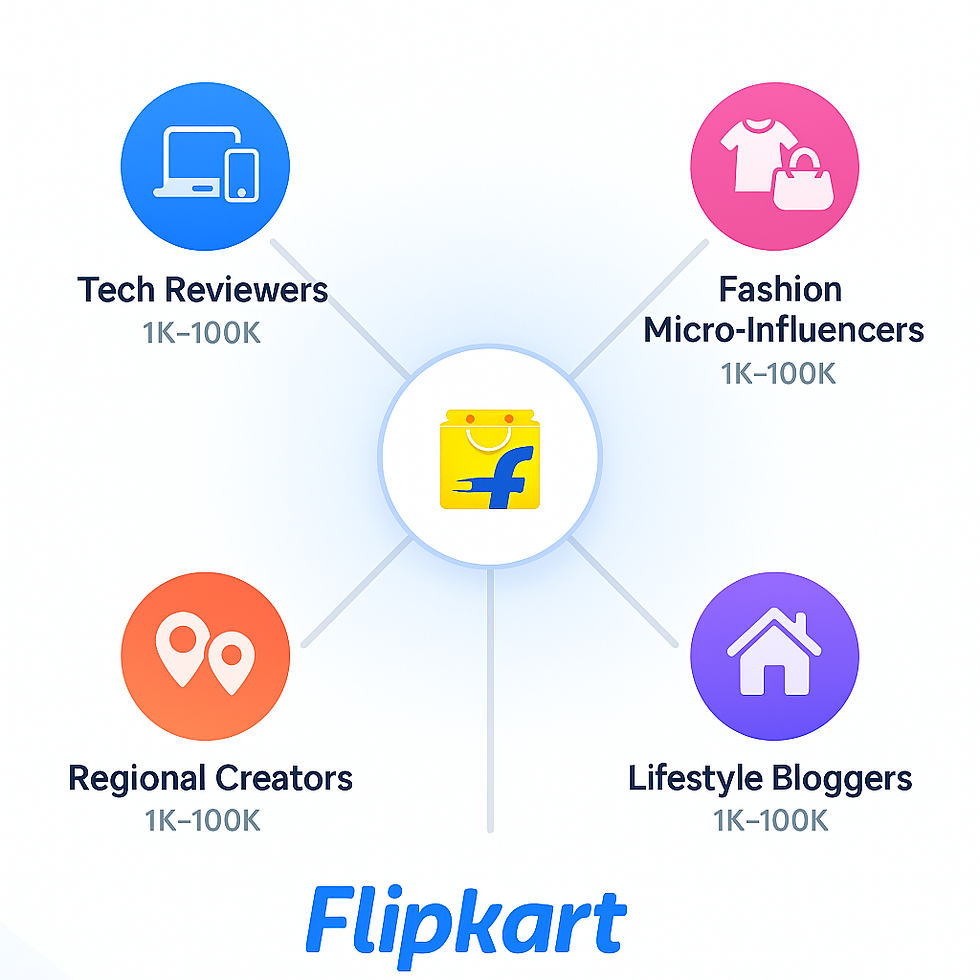
Real-Time Campaign Optimization
Unlike traditional advertising where creative is locked for months, Flipkart's influencer network enabled dynamic content optimization. Their marketing technology stack included:
A/B testing different influencer content formats across demographics
Performance tracking of individual influencer ROI by product category
Real-time budget allocation based on engagement metrics and conversion data
User-generated content amplification to maximize organic reach
During Big Billion Days 2024, Flipkart collaborated with influencers across various niches—tech, lifestyle, and fashion—to create authentic, relatable content that included unboxing videos, exclusive previews, and countdown campaigns. This strategy generated exponentially higher earned media value compared to traditional advertising spend.

The Economics of Influence: ROI That Traditional Advertising Can't Match
Cost-Per-Engagement Optimization
Flipkart's finance team discovered what performance marketers call the "micro-influencer multiplier effect": partnering with 100 micro-influencers costs less than one celebrity endorsement but delivers:
Higher conversion rates: 84.8% of brands report influencer marketing as effective
Better audience targeting: Category-specific influencers reach high-intent purchasers
Extended campaign lifetime: Micro-influencers often create multiple content pieces per partnership
Authentic social proof: User-generated content feels more genuine than produced advertisements
Industry data shows that brands get $4.12 for every $1 spent on Instagram influencer campaigns, and Flipkart maximized this by working with 62.4% of their influencer partners across 10+ creators simultaneously. This distributed approach reduced campaign risk while amplifying message reach across diverse audience segments.

Social Commerce Integration
Flipkart's 2024 strategy included innovative social commerce features that transformed influencer content into direct sales channels:
Exclusive promo codes for influencer audiences, creating tracking attribution
Limited-time flash sales promoted through influencer stories and posts
Live shopping events where influencers demonstrated products in real-time
Collaborative content where influencers created shopping lists and recommendation carousels
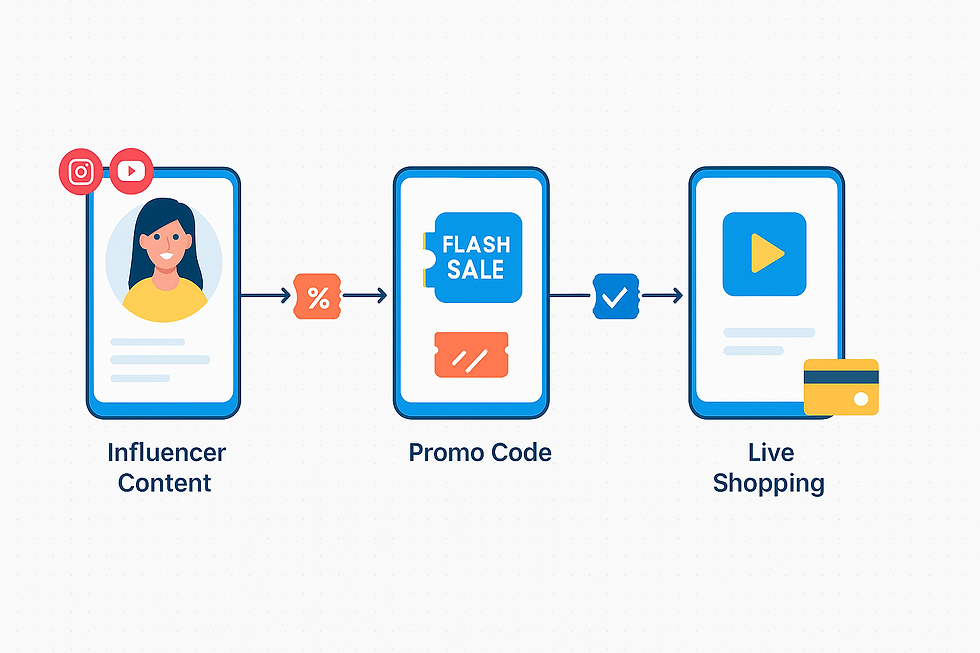
This integration of influencer marketing with e-commerce functionality created what marketing analysts call "seamless purchase journeys"—reducing the customer acquisition cost while increasing lifetime value.
The Strategic Lesson: From Influence to Revenue

Performance Marketing Meets Authentic Engagement
Flipkart's Big Billion Days success demonstrates the evolution from impression-based advertising to engagement-driven performance marketing. Their influencer strategy achieved multiple marketing objectives simultaneously:
Brand Awareness: Reached 282 million visitors through distributed influencer content
Performance Marketing: Generated measurable ROI through trackable promo codes and affiliate links
Customer Acquisition: Attracted high-intent buyers through category-specific targeting
Retention Marketing: Built long-term relationships through authentic creator partnerships

The Network Effect Advantage
By building relationships with 10,000+ influencers rather than relying on celebrity endorsements, Flipkart created a scalable marketing infrastructure. This approach offers:
Reduced dependency risk: No single influencer partnership determines campaign success
Diverse content creation: Multiple creators generate varied content formats and styles
Audience segmentation: Different influencers reach different demographic and psychographic segments
Cost efficiency: Lower overall marketing spend with higher engagement rates

Key Takeaways: The Future of Performance Marketing
Quantifiable Business Impact
The numbers validate Flipkart's influencer-first strategy:
₹20,000+ crores in sales during Big Billion Days 2024
282 million visitors engaged through influencer-amplified campaigns
7x higher engagement rates compared to traditional celebrity endorsements
$4.12 ROI for every dollar spent on influencer partnerships
The Strategic Paradigm Shift
For marketing leaders, Flipkart's approach reveals a fundamental truth: the future of performance marketing lies in authentic influence, not expensive celebrity endorsements. Micro-influencers with 1K-100K followers deliver superior engagement rates, lower customer acquisition costs, and higher conversion rates than traditional advertising channels.
The lesson extends beyond e-commerce: in an attention-scarce digital economy, trust and relevance matter more than reach and impressions. Flipkart proved that building an army of authentic micro-influencers creates more sustainable competitive advantage than any single celebrity partnership.
As consumer behavior shifts toward peer recommendations over celebrity endorsements, the brands that master micro-influencer network strategies will dominate their respective markets. The question isn't whether to invest in influencer marketing—it's whether you're building the right type of influencer relationships to drive measurable business results.
Ready to build your own high-performing influencer network? What's your biggest challenge in transitioning from traditional advertising to performance-driven influencer marketing? Share your experiences and questions in the comments below—let's discuss how micro-influencer strategies could revolutionize your marketing ROI.
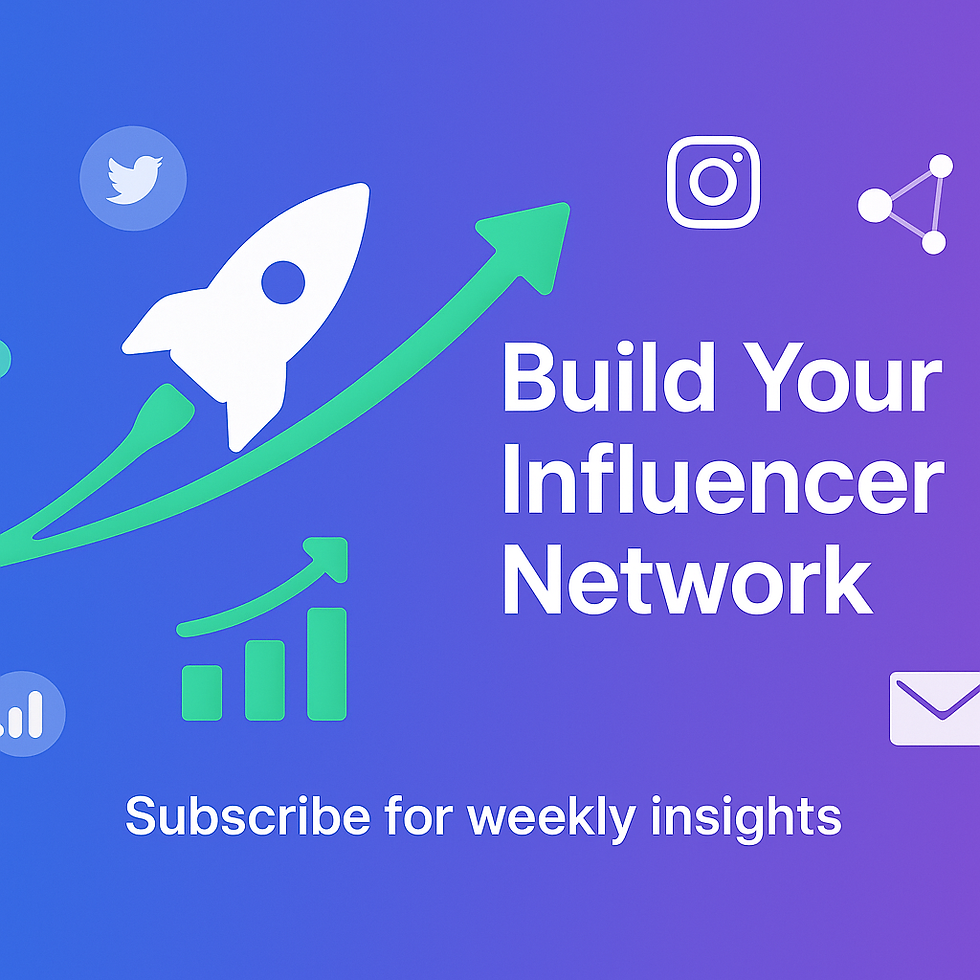
Subscribe to our weekly newsletter for more data-driven insights into how India's top brands are rewriting the rules of digital marketing. Next week: How Swiggy's ecosystem expansion strategy is creating the super app blueprint for Indian startups.
.png)
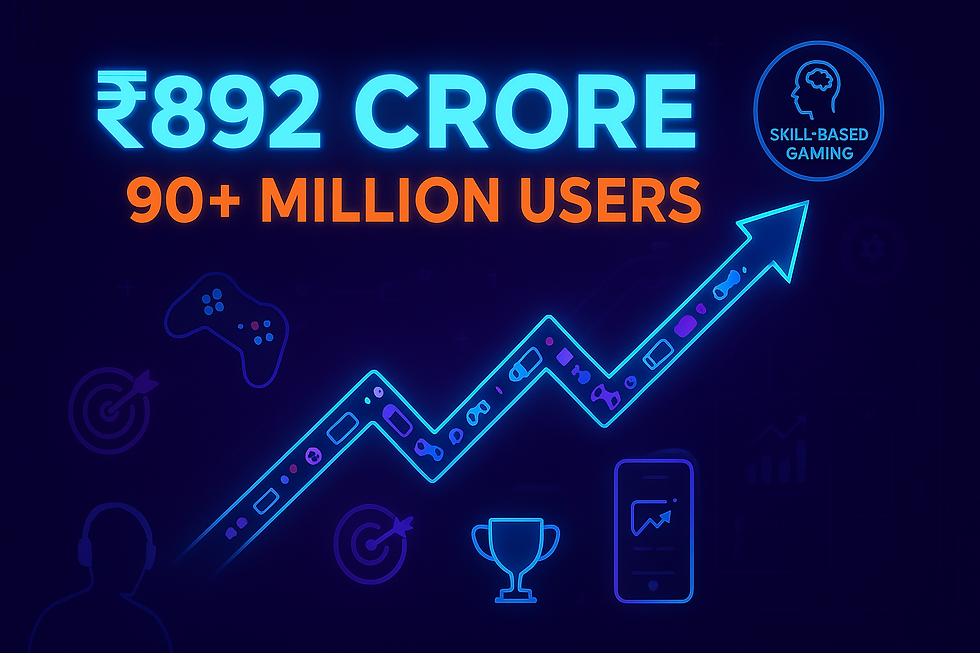
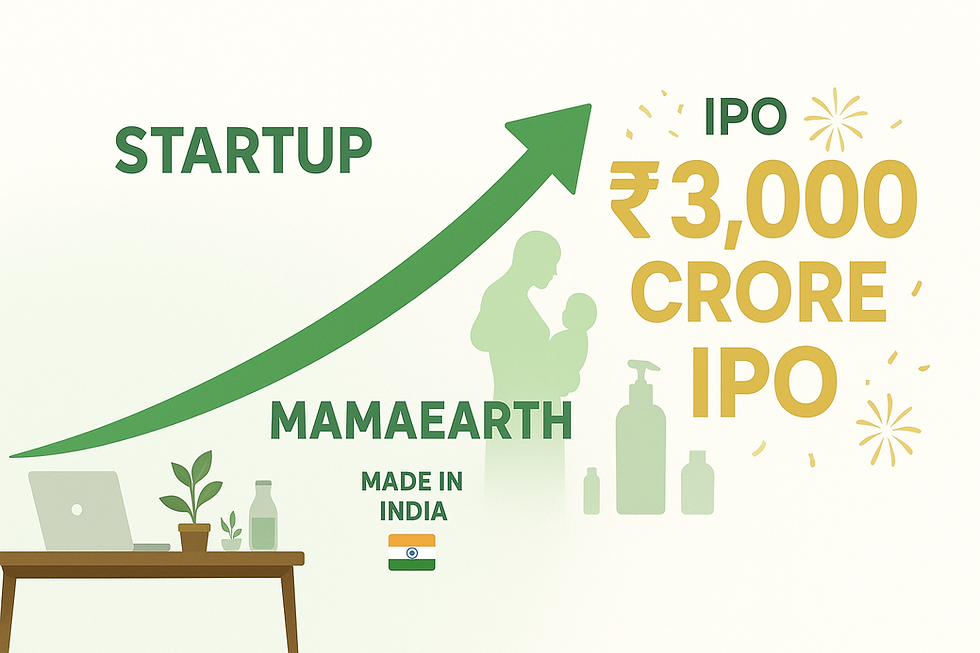
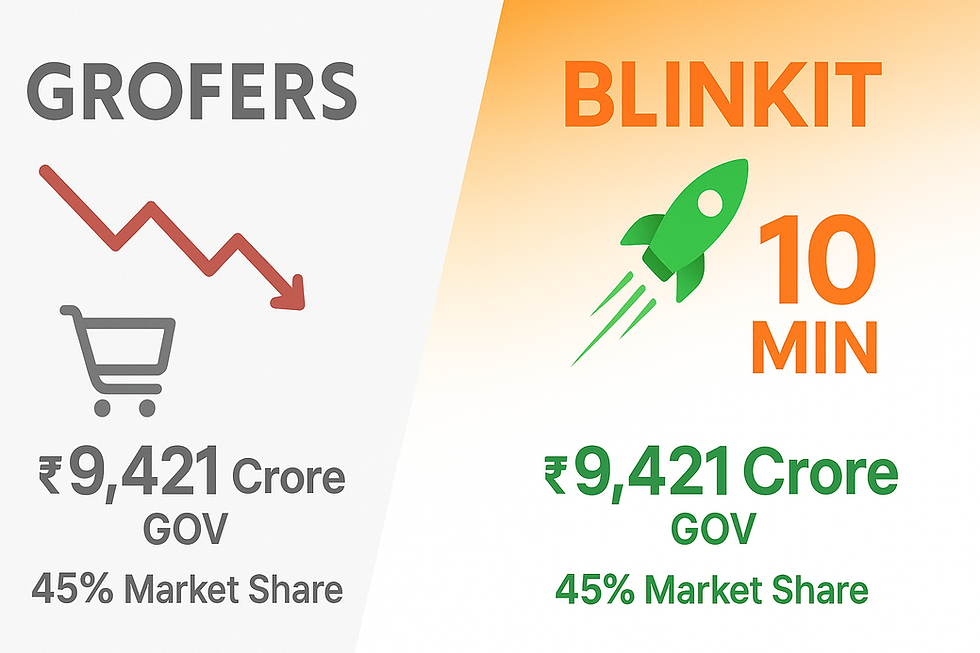
Comments